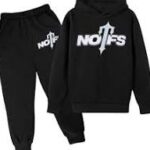Printing plays a big role in many industries, from packaging to publishing. One important product used in printing is the printing ink extender. These extenders help improve ink performance, reduce costs, and give better results. If you’re in the printing business or just curious, learning about different types of printing ink extenders can help you understand their value.
In this blog, we’ll explore the main types of ink extenders used in the US, how they work, and why they are important. Whether you work in commercial printing or custom packaging, this guide will give you useful and clear information.
What is a Printing Ink Extender?
A printing ink extender is a type of additive that is mixed with printing ink. Its main job is to reduce the amount of pigment in the ink without changing the ink’s texture or quality. This makes the ink last longer, dry better, and sometimes even look smoother on paper or packaging material.
In short, ink extenders make printing more affordable, flexible, and efficient.
Most Common Types of Printing Ink Extenders in the US
In the fast-paced world of printing, choosing the right ink extender can make a huge difference in both performance and cost-effectiveness. Across the US, printing companies rely on different types of printing ink extenders based on their unique project needs—ranging from packaging and advertising to magazines and product labeling.
Below are the most commonly used types of printing ink extenders that are popular in the American market today:
1. Transparent Ink Extenders
Transparent ink extender is the go-to choice for printers looking to lighten the color intensity without altering the tone or transparency of the ink. They are widely used in commercial offset printing, art prints, and packaging designs where subtle effects are required.
These extenders work by reducing the pigment concentration while allowing the original color to remain visible. It helps create soft gradients, gentle background shades, and layered effects without adding new colors to the mix.
Ideal Applications:
- Light-colored labels
- Poster backgrounds
- Subtle branding graphics
Key Benefits
- Maintains original ink color
- Excellent for multi-layer printing
- Reduces overall ink consumption
- Great for tone control and soft effects
2. Opaque Ink Extenders
Unlike transparent extenders, opaque extenders are designed to add a masking effect to the ink. These are commonly used when printers want to create a lighter shade with reduced visibility of the surface underneath. Often used in flexographic and screen printing, opaque extenders are popular in creating bold, high-contrast visuals on colored or textured materials.
These extenders often contain white pigments, such as titanium dioxide, which make the ink appear thicker or more matte in finish. It helps with readability and brand visibility, especially in packaging and label printing.
- Ideal Applications:
- Food packaging
- Printed cartons
- Custom product labels
Key Benefits:
- Lightens ink while increasing coverage
- Enhances contrast on darker backgrounds
- Works perfectly on non-white or recycled papers
- Gives a more solid, premium print appearance
3. Resin-Based Ink Extenders
Resin-based extenders are known for their high-performance bonding strength and durability. These extenders use synthetic or natural resins that help inks stick better to glossy, coated, or non-porous materials. They’re widely used in gravure and flexo printing, especially in industries where moisture, abrasion, or chemical exposure is a concern.
With resin-based extenders, printed surfaces gain better resistance to rubbing, smudging, and environmental damage—making them perfect for packaging and branding materials exposed to different handling conditions.
Ideal Applications:
- Flexible plastic packaging
- Industrial labels
- Detergent or chemical product wrappers
Key Benefits:
- Excellent adhesion to tricky surfaces
- Enhances print longevity and toughness
- Improves gloss and resistance to wear
- Suitable for both solvent and water-based systems
4. Wax-Based Ink Extenders
Wax-based extenders offer a smooth, rub-resistant finish that makes prints more durable and long-lasting. They are a favorite in screen printing and high-speed packaging production, especially where printed items are frequently handled or stacked.
These extenders contain micro wax particles that melt and blend into the ink film, improving surface glide and scratch resistance. They’re often used to achieve satin or matte textures while also protecting the ink from wear.
Ideal Applications:
- Shopping bags and textile labels
- Corrugated box designs
- Retail packaging with high-touch exposure
Key Benefits
- Adds scratch resistance and anti-blocking
- Delivers a soft-touch, matte or satin effect
- Reduces smearing in fast drying lines
- Compatible with various substrates like paper, plastic, and textiles
5. Water-Based Ink Extenders
As sustainability becomes a growing priority in the US, water-based printing extenders become a top choice for eco-conscious printers. These extenders are non-toxic, low-VOC (volatile organic compounds), and safer for both operators and the environment.
Water-based extenders are mostly used in printing on paper, cardboard, corrugated boxes, and other absorbent materials. They’re also easier to clean up and work well in schools, small print shops, and eco-friendly packaging production.
Ideal Applications:
- Eco-friendly product packaging
- Paper bag printing
- Children’s books and educational materials
Key Benefits
- Environmentally safe and sustainable
- Low odor and free from harsh chemicals
- Cost-effective and easy to clean
- Perfect for porous and recyclable materials
6. UV Ink Extenders
UV ink extenders are specially made to work with inks that dry quickly when exposed to ultraviolet (UV) light. It helps the ink harden instantly, making the printing process faster and cleaner. These extenders help printers achieve high-gloss, fast-drying, and durable results, which are essential in luxury packaging, magazines, and other high-end print applications.
Since UV printing does not rely on evaporation or absorption, UV extenders allow the ink to maintain sharpness and clarity while improving flow and flexibility. They’re especially useful when precision and speed are needed at the same time.
Ideal Applications:
- Glossy magazine covers
- Luxury cosmetic packaging
- Business cards and brochures with special effects
Key Benefits
- Fast curing for high-speed printing
- Long-lasting, smudge-resistant results
- Enhances vibrancy and ink clarity
- Great for non-porous surfaces like plastic or foil
- Great for non-porous surfaces
Conclusion: Choose the Right Ink Extender for Your Printing Needs
Choosing the right printing ink extender depends on your printing method, materials, and the final look you want to achieve. Whether you’re aiming for sustainability with water-based extenders, durability with resin or wax, or premium results with UV ink extenders—there’s a perfect option for every job.
For printers across the US, understanding the types and benefits of ink extender is a smart move. It not only improves print quality but also reduces waste, saves money, and boosts your brand’s reliability in the eyes of customers.




